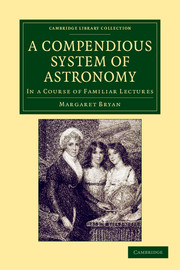Refine listing
Actions for selected content:
16950 results
Contents
-
- Book:
- Foundations of Quantum Gravity
- Published online:
- 05 July 2013
- Print publication:
- 16 May 2013, pp v-vi
-
- Chapter
- Export citation
Frontmatter
-
- Book:
- Foundations of Quantum Gravity
- Published online:
- 05 July 2013
- Print publication:
- 16 May 2013, pp i-iv
-
- Chapter
- Export citation
Appendix E - Addendum for Chapter 5
-
- Book:
- Foundations of Quantum Gravity
- Published online:
- 05 July 2013
- Print publication:
- 16 May 2013, pp 383-386
-
- Chapter
- Export citation
3 - Microscopic formulations of particle interactions
- from Part I - Galilean and special relativity
-
- Book:
- Foundations of Quantum Gravity
- Published online:
- 05 July 2013
- Print publication:
- 16 May 2013, pp 101-138
-
- Chapter
- Export citation
6 - Quantum mechanics in curved space-time backgrounds
- from Part II - General relativity
-
- Book:
- Foundations of Quantum Gravity
- Published online:
- 05 July 2013
- Print publication:
- 16 May 2013, pp 245-266
-
- Chapter
- Export citation
7 - The physics of horizons and trapping regions
- from Part II - General relativity
-
- Book:
- Foundations of Quantum Gravity
- Published online:
- 05 July 2013
- Print publication:
- 16 May 2013, pp 267-308
-
- Chapter
- Export citation
Preface
-
- Book:
- Foundations of Quantum Gravity
- Published online:
- 05 July 2013
- Print publication:
- 16 May 2013, pp vii-ix
-
- Chapter
- Export citation
Appendix F - Addendum for Chapter 7
-
- Book:
- Foundations of Quantum Gravity
- Published online:
- 05 July 2013
- Print publication:
- 16 May 2013, pp 387-388
-
- Chapter
- Export citation
Appendix C - Addendum for Chapter 3
-
- Book:
- Foundations of Quantum Gravity
- Published online:
- 05 July 2013
- Print publication:
- 16 May 2013, pp 369-372
-
- Chapter
- Export citation
Appendix B - Addendum for Chapter 2
-
- Book:
- Foundations of Quantum Gravity
- Published online:
- 05 July 2013
- Print publication:
- 16 May 2013, pp 365-368
-
- Chapter
- Export citation
Appendix A - Addendum for Chapter 1
-
- Book:
- Foundations of Quantum Gravity
- Published online:
- 05 July 2013
- Print publication:
- 16 May 2013, pp 357-364
-
- Chapter
- Export citation
9 - Gravitation of interacting systems
- from Part II - General relativity
-
- Book:
- Foundations of Quantum Gravity
- Published online:
- 05 July 2013
- Print publication:
- 16 May 2013, pp 345-356
-
- Chapter
- Export citation
Notations and Conventions
-
- Book:
- Foundations of Quantum Gravity
- Published online:
- 05 July 2013
- Print publication:
- 16 May 2013, pp x-xii
-
- Chapter
- Export citation
Index
-
- Book:
- Foundations of Quantum Gravity
- Published online:
- 05 July 2013
- Print publication:
- 16 May 2013, pp 397-406
-
- Chapter
- Export citation
Part II - General relativity
-
- Book:
- Foundations of Quantum Gravity
- Published online:
- 05 July 2013
- Print publication:
- 16 May 2013, pp 203-204
-
- Chapter
- Export citation
1 - Classical special relativity
- from Part I - Galilean and special relativity
-
- Book:
- Foundations of Quantum Gravity
- Published online:
- 05 July 2013
- Print publication:
- 16 May 2013, pp 11-46
-
- Chapter
- Export citation
5 - Fundamentals of general relativity
- from Part II - General relativity
-
- Book:
- Foundations of Quantum Gravity
- Published online:
- 05 July 2013
- Print publication:
- 16 May 2013, pp 205-244
-
- Chapter
- Export citation
4 - Group theory in quantum mechanics
- from Part I - Galilean and special relativity
-
- Book:
- Foundations of Quantum Gravity
- Published online:
- 05 July 2013
- Print publication:
- 16 May 2013, pp 139-202
-
- Chapter
- Export citation

Stellar Evolution and its Relations to Geological Time
-
- Published online:
- 05 May 2013
- Print publication:
- 24 May 2012
- First published in:
- 1889

A Compendious System of Astronomy
- In a Course of Familiar Lectures
-
- Published online:
- 05 May 2013
- Print publication:
- 07 June 2012
- First published in:
- 1797
